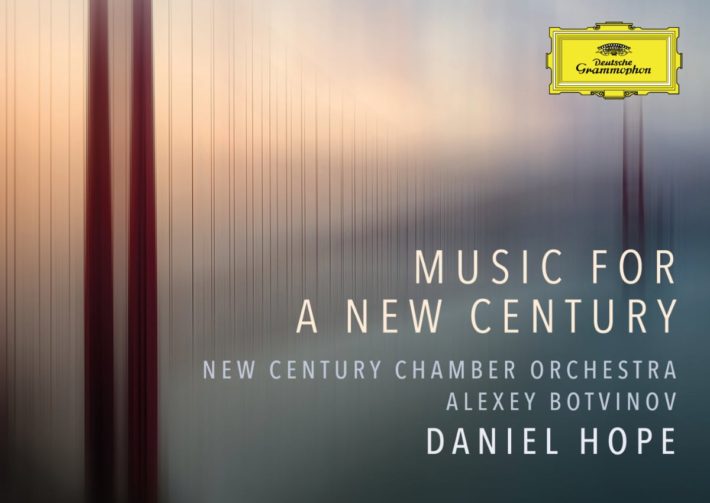Music for a New Century is contemporary in the truest sense: featuring all living composers, it presents (with the exception of one work) world premieres, all commissioned by Hope’s New Century Chamber Orchestra. Four selections might seem sparse at first glance, but we should consider that each brings a unique aspect to a unique program. Philip Glass needs little introduction; Tan Dun has made successful ventures into other genres like film music; Jake Heggie who composed the 2020 Unexpected Shadows, proved quite impressive.
Glass’ Piano Concerto is the lone work that is not a world premiere. The first movement has an air of grandeur, with pianist Alexey Botvinov setting the mood via beautifully phrases and colors that command our attention. We can hear the composer’s minimalist style throughout, especially at the high point and its repeating arpeggiated patterns and scales. The third movement, dedicated to Arvo Pärt, is built upon a two-note pattern that becomes the underlying thread. An emphasis on the lower register paired with this unrelenting pattern gives the work the feel of an ongoing journey. The pianist and the orchestra capture this spirit: what’s interesting is that the relative sense of calm is not without an element of reflection and profundity.
In sharp contrast to the Glass is Tan Dun’s Double Concerto, which might be the most angular work on the album. The first Mysterioso is primal (à la Stravinsky’s Sacre du Printemps); an unapologetic but fitting aggressiveness comes from the percussion and Hope’s razor-sharp articulation. The piano brings resonance and is by far the mellowest thing we hear, thanks to Botvinov’s mindfully controlled articulation. When both parts are combined with the ensemble’s low strings, though, the sound transforms into something terrifying. Given the personality of the movement, this makes for a highly effective performance. The other movements play very much to Dun’s cinematic style, but it’s the second Mysterioso (track 5) that really stands out with its dynamic and programmatic quality. The opening might be atmospheric and ethereal but is certainly more eerie than soothing. Warmth and comfort do greet our ears in the proceeding tonal section, which the soloists play with sustained lines and seamless dialogue. Everyone brings the energy into an exciting latter half. Here, Dun relies heavily on an interesting array of percussion that creates a suspenseful chase scene. Kudos are certainly in order for the percussionists, whose strikes remain pristine and well-controlled even in the most charged moments.
Related Posts
- Review: “Journey Through a Century” – Sueye Park, Violin
- Review: Roots – Nemanja Radulović, Violin
- Review: Echo – Ruby Hughes, Soprano
Mark-Anthony Turnage’s Lament for Solo Violin and String Orchestra puts Hope’s artistic capabilities front and center. His varied bowing and phrasing give the violin a vibrant, narrative character. The piece, interestingly, doesn’t necessarily come off as overtly melancholic from the get-go. The way the performers handle the expansive sections and subsequent quiet moments might actually encourage contemplation more than anything. A lurking tension throughout the work, however, is smartly maintained. True anguish finally manifests at around 8’30” and Hope uses slides between the double stops for a dual purpose: not only do they makes the dissonances a bit more gentle on the ear but they also lend the instrument an aching, vocal quality.
Heggie’s Overture is a jubilant closing to the album and reflects various influences. The recurring rondo theme calls to mind Copland’s harmonies. We can hear some classical influences in the pastoral section about a minute in, but fast forward another couple of minutes and a bit of Bartók is present. The eclecticism and sectional character shifts make up a large part of the work’s drive, but a lot of it is also up to the performers: they unify the work with an ever-present optimism and energy. All the strings also have a lovely tone that rounds off the more stringent harmonies. The sound engineering brings a very natural balance to the melody and accompaniment relationship: the low strings, for instance, are pleasantly present and add plenty of depth but always allow for the violins’ energy to soar.
These four works invite listeners to explore a kaleidoscope of different emotions. Of course, to present them as effectively and enthusiastically as is done here is a challenge. Hope, Botvinov, and the ensemble rise to the occasion. A refreshing and engaging experience undoubtedly awaits the listener.

Music for a New Century
Daniel Hope- Violin
Alexey Botvinov – Piano
New Century Chamber Orchestra
Deutsche Grammophon, CD 4864128
Related Albums
America | For Seasons | Spheres | Hope
Read more classical music reviews or visit The Classic Review Amazon store
Follow Us and Comment:
[wd_hustle id=”HustlePostEmbed” type=”embedded”]











